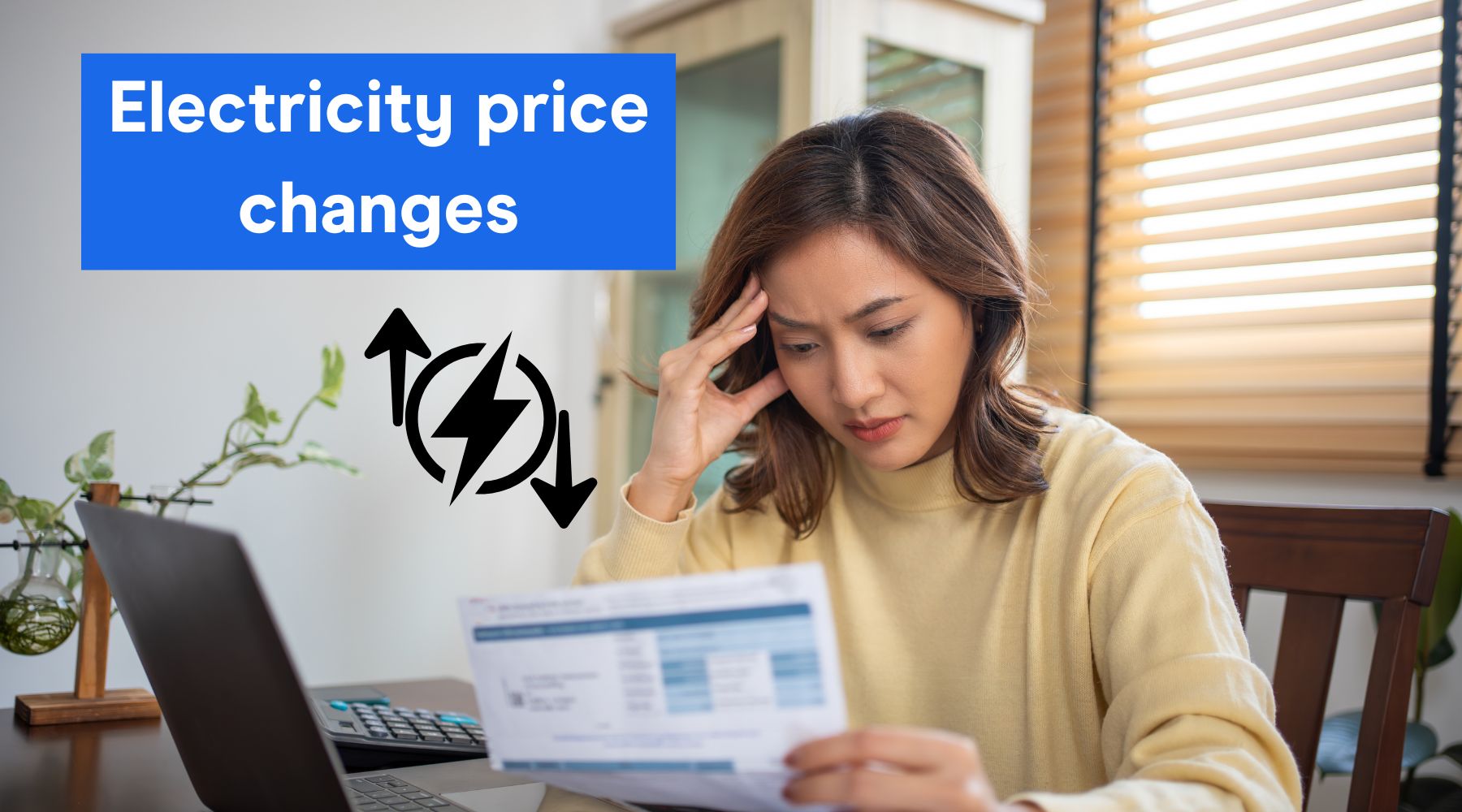Good news for electricity prices – unless you live in this one state

Households in Victoria, New South Wales and South Australia can breathe a sigh of relief from another price hike. But if you're in South East Queensland, expect electricity prices to go up from 1 July 2024.
The energy regulators have finally released their 2024-2025 default offer electricity prices that will come into effect from 1 July.
And for the most part, it's good news, with prices going down by $17 to $190 over the year, depending on where you live.
Unfortunately for South East Queensland, residential prices are going up by around $83. But this is where the $1,000 QLD energy rebate for all households comes in handy, right?
It's not going to ease our woes given energy bills have skyrocketed the last couple of years, but it's at least not another price hike...
Here's a quick rundown of what all we'll be talking about in case you want to skip around.
- What are default market offers?
- Electricity price changes in NSW, SA and QLD
- Households in Victoria to save $100 on electricity bills
- How will energy retailers react?
- Should I be switching energy plans right now?
- Notice period from energy retailers
What are default market offers?
The Default Market Offer (DMO) is also known as the reference price or benchmark price in NSW, SA and South-East Queensland.
In VIC, it's known as the Victorian Default Offer or VDO.
It's the maximum amount retailers can charge households and small businesses on a standard retail plan.
They're there for the benefit of Aussies that don't actively compare and switch electricity plans, almost acting as a safety net of sorts.
Electricity price changes in NSW, SA and South East QLD
Here is a rundown of price changes for both households with and without controlled load.
A controlled load tariff will apply to you if you have a separate metering for certain appliances such as a heating system.
Households
State | Customer type | DMO for 2024-25 | % change on previous year (nominal) |
|---|---|---|---|
New South Wales (depending on distribution region) | Residential without CL | $1,810 to $2,499 | -0.9% to -1.1% ($17 to $28 less than last year) |
Residential with CL | $2,495 to $2,918 | -2% to -6.4% ($59 to $190 less than last year) | |
South East Queensland | Residential without CL | $2,052 | +4.2% ($83 more than last year) |
Residential with CL | $2,400 | +1.6% ($37 more than last year) | |
South Australia | Residential without CL | $2,216 | -2.8% ($63 less than last year) |
Residential with CL | $2,746 | -1.5% ($41 less than last year) |
Small businesses
State | Customer type | DMO for 2024-25 | % change on previous year (nominal) |
|---|---|---|---|
New South Wales (depending on distribution region) | Small business without CL | $4,407 to $5,718 | -0.7% to -8% ($43 to $402 less than last year) |
South East Queensland | Small business without CL | $4,246 | +1% ($44 more than last year) |
South Australia | Small business without CL | $5,337 | -8.8% ($512 less than last year) |
"The easing in wholesale prices has been offset by the pressures currently observed in the poles and wires - network prices," AER chair Clare Savage said in a media release.
The combined effect of these various changes in costs have resulted in prices decreasing in New South Wales and South Australia, and increasing in South East Queensland.
Households in Victoria to save $100 on electricity bills
It's official, households and small businesses in Victoria won't have to bear the brunt of another electricity price hike.
The news comes after the Essential Services Commission revealed its final decision on the Victorian Default Offer (VDO) electricity price.
- From 1 July 2024, the average rate VDO customers pay for their electricity will reduce by around $100 (or 6%) for residential customers
- The price cut will be around $260 (or 7%) for small business customers
- Currently, 340,000 residential and 58,000 small business customers are on the VDO. There are big savings to be made by comparing and switching to a market offer, which is generally more competitive.
So, how will energy retailers react?
Energy retailers will now decide how they want to react to these changes. Will they decrease the price of their current market offers?
Or, will inflation and other factors impact their decision to swing the other way?
We reached out to a few retailers, including AGL to find out more.
"As one of Australia's largest energy retailers, AGL will carefully consider the changes to the Default Market Offer and Victorian Default Offer, as well as a range of other factors, to determine the outcome for our market contract customers," an AGL spokesperson told Finder.
Should I be switching energy plans right now?
The short answer is, hang in there and wait until at least after 1 July to compare and switch plans.
This way, you'll be able to guarantee the retailer won't change prices shortly after you've joined them.
It's the same advice for both electricity and gas plans. Gas prices are usually revised around the same time as electricity price changes are made.
However, the longer answer could save some of you more money...
Waiting is okay if you're pretty active in comparing and switching energy plans every 6-12 months.
This includes actively negotiating a better deal with your current provider.
But, if you haven't compared energy plans in over 12 months to see if you're still on a good deal, we need to have a chat.
There is a good chance you're paying more than you should.
So here's what you can do:
- Look at your recent energy bill to see if your provider has mentioned they have a cheaper plan than your current one.
- Regardless of what you find, compare energy plans to see if another retailer is offering a better deal.
- If you find cheaper rates, call your provider and negotiate sticking around if they can price match or do you one better.
- They're not budging? Switch to the other retailer and then set a reminder for after 1 July to compare plans again.
But wait, isn't that too much work?
Once you're comfortable comparing plans, everything else is a piece of cake. The provider you switch to will take care of everything in the backend so you won't have to lift a finger after signing up.
Interestingly, the federal government is currently in talks about a "one-click switch" initiative that could force energy retailers to offer customers a cheaper deal in just "one-click" when their plans end. This will prevent households from being moved to more expensive offers. In fact, the Australian Competition and Consumer Commission has found households could save $400 a year by actively pursuing a lower-costing plan.
Notice period from energy retailers you should know about
Retailers will normally inform existing customers of any price changes around mid-June onwards.
Depending on where you live, the price changes will be reflected from July or August onwards. Sometimes September.
And you might think there's at least a 30-day notice period for customers, but alas energy rules are funky like that.
An Origin Energy spokesperson explained to Finder how it all works.
"All retailers are required to provide between 5 and 10 business days notice of price changes to customers depending on the location and the type of price change," said the Origin Energy spokesperson.
"The notification period in most states and territories is 5 days (regardless of whether prices are going up or down), but in QLD it is 5 days for a decrease and 10 days for a price increase."
However, energy providers try to give more notice than the expected 5-10 business days, even if they're legally not obligated to.
Compare energy plans to see if you can switch and save right now.
Ask a question
